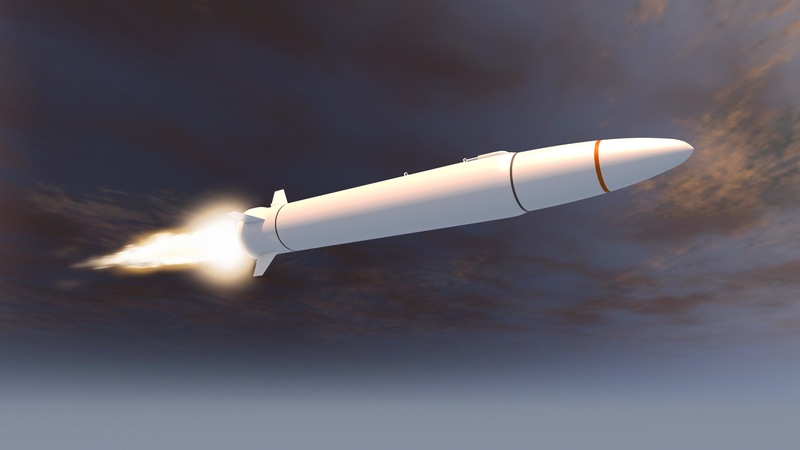
The future of aerospace and defense is quickly approaching, forcing us into an era where the boundaries of speed and innovation are being relentlessly pushed. If you’re curious what hypersonics are and how they relate to your projects, you’re not alone. By the end of this article, not only will you have a clear understanding of what hypersonics are, but we believe you will be electrified and enthusiastic about their potential to impact the future, as we are here at Mentis Sciences.
In the simplest terms, hypersonics refers to an object that flies five times the speed of sound. They relate to extremely high speeds, specifically those beyond Mach 5. Think of it in the terms of a theoretical wall. Breaking it (which is going beyond Mach 1) was once deemed impossible. Now, we are completely shattering that wall five times over at hypersonic speeds. In the defense industry interpretation, hypersonic systems have also taken on the characteristic of being able to maneuver throughout the flight profile, which greatly increases aerothermal loads, and makes engineered solutions more challenging to develop.
Now that we’re visualizing the immense possibilities that can come from this, imagine international flights that currently take hours to get to your destination reduced to minutes. Picture this: aircrafts and missiles blazing through the skies at velocities that not long ago were the stuff of science fiction. Welcome to the captivating world of hypersonics, a realm that's not just about sheer speed, but a radical redefinition of aerospace capabilities.
Breaking Down Hypersonics
The term “hypersonic” isn’t just a fancy term. It represents a groundbreaking leap in aerospace capabilities, and it stands as a testament to human ambition, innovation, and the quest to transcend boundaries.
When an object attains hypersonic speeds, it's entering a realm where traditional aerodynamics and flight principles undergo significant transformations. When you travel at these velocities, the air around the object behaves differently – air molecules compress, temperatures increase at a high rate of speed, and the frictional forces can be intense enough to challenge even the most robust materials.
Furthermore, these speeds can introduce a host of intricate challenges. Some of those include plasma formation, that can inhibit communications, thermal stresses that can threaten structural integrity, nuanced aerodynamic behaviors unique to these speeds, and the need for advanced propulsion and cooling systems. It's an intricate dance of science, engineering, and innovation. Every obstacle offers an opportunity to innovate, to create materials and technologies previously thought impossible, and to reimagine the future of aerospace and defense.
The Challenges on the Horizon
Like most groundbreaking discoveries and advancements, hypersonics systems aren’t exempt from hurdles. Being able to master a flight at such extreme speeds brings an array of unique and unprecedented challenges.
One of the primary concerns lies in the realm of engineering. Due to the aircraft flying at such an extreme speed, it’s subject to extreme heat. The friction between the air and the moving object's surface generates scorching temperatures. These temperatures are so extreme that they can compromise the structural integrity of even the most resilient materials, leading to potential degradation or failure.
Then there’s the challenge of immense pressure. The material needs to not only be heat resistant, but it must also be incredibly strong at temperature to withstand maneuvering loads. Finding or developing materials that can withhold these challenges is no small task.
However, history has shown us that every challenge also presents an opportunity. Innovative companies, especially those in the aerospace and defense sectors, have stepped up to address these concerns. Mentis Sciences Inc., for instance, has been utilizing its ingenuity and deep-rooted subject matter expertise to develop solutions. Our commitment to ethics, community service, and excellence ensures that these advancements benefit, and are accessible to, the broader community.
The Promising Road Ahead
Beyond the challenges, hypersonics hold the promise of being able to change the future in the fields of transportation and defense. Imagine a world where international travel takes just a few hours (or even minutes) and defense systems operate at unparalleled speeds, enhancing global security. Imagine missiles intercepting threats in the fraction of the time they do now.
Currently, the race to harness hypersonic technologies has multiple players. Most of them are companies trying to invest in developing materials that can achieve and maintain these high rates of speed.
A Glimpse into the Present
Mentis Sciences is grounded in values of integrity and excellence, and we strive to follow these principles as we continue contributing to this domain. The feasibility of hypersonics is not just a question – it's a challenge being actively tackled. Our approach goes beyond technical knowledge. We integrate our core values into every part of our operations. We want our contributions to the hypersonic field to not just reach dizzying speeds, but to do so with responsibility, ethics, and a broader future vision.
It’s our goal to push boundaries while staying grounded in our principles. It’s a testament to the idea that with the right mix of expertise, values, and vision, the sky isn’t the limit.
Final Thoughts
How feasible is this technology? The journey has been challenging, but with Mentis Sciences looking ahead at opportunities to support the field, the horizon looks promising. With continuing research, dedication, and a blend of ethics and innovation, the dream of further exceeding hypersonic speeds is quickly coming close to reality.